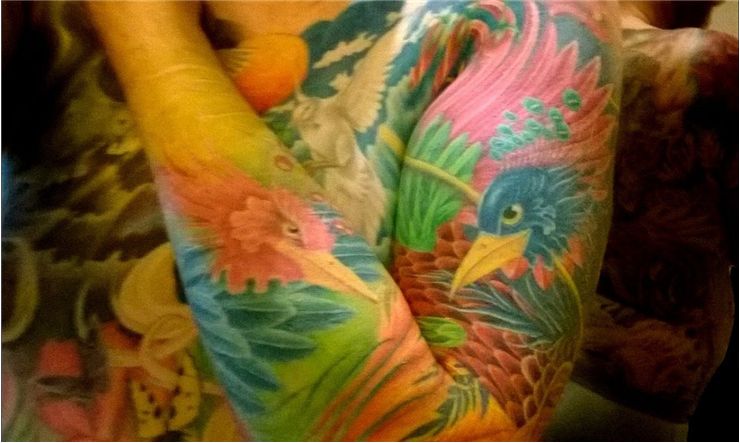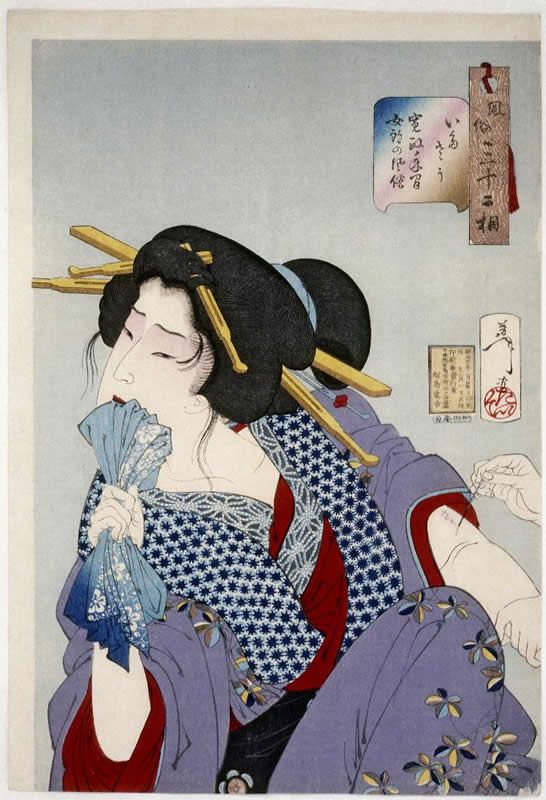History of Tattoos - Meaning and Origin
Tattooing is an art form and form of body modification where a pigment is inserted into a skin to change its color permanently. It is a very old tradition and today is more popular and socially acceptable than ever.
Tattoo History
We may see tattoos as an act of rebellion against the society but that is only one of the many reasons why people wore and still wear tattoos. Tattoos find ways to human skin from purely accidental to necessary and life-saving.
Tattoo Facts
Tattoos appeared in different parts of the world practically independently and at the same time. Different styles and techniques developed in these places and they today mix and mingle to joy of all tattoo enthusiasts and artists. Find out more interesting facts about tattooing and tattoos.
Tattoo Making Process
Tattooing does a strange thing in combination with a human body to stay in the skin for a very long time. For those that want pictures on texts on their but don't like the part “very long time”, there are alternatives which last shorter and are just as pretty.
Brief History of Tattoos
An evidence that prehistoric people knew and practiced tattooing are tools that were discovered in France, Portugal, and Scandinavia. These tools are at least 12,000 years old and were used for tattooing. Oldest surviving tattoos are the ones found Ötzi the Iceman, mummy found in the Ötz valley in the Alps and dating from the 5th to 4th millennium BC. We also know that Germanic and Celtic tribes also tattooed themselves. Mummy of Amunet from ancient Egypt and the mummies at Pazyryk, Siberia, (dating from the end of the 2nd millennium BC), that we found also have tattoos on them. So tattoos were known around the world very early in human history.
Ancient Egypt and India used tattoos as methods of healing and as methods of religious worship. They were also marks of a status in a society but also a punishment. Tattoos in Philippines were marks of the rank and accomplishments and people there believed that they have magical properties.
When Christianity appeared, tattooing was considered a barbaric tradition and it slowly faded in Europe to return with transoceanic travels in 16th. Travelers like Sir Martin Frobisher, William Dampier, and Captain James Cook brought home with them indigenous people from places they visited and they were often tattooed. At first, tattooing was “reserved” for sailors and lower classes but in time, as tattoo artists became more and more proficient, tattooing became hobby of aristocracy which had money to pay high prices of professionals. As the tattooing became cheaper it again was seen as a mark of a lower class. It stayed like that until 1960s and the hippie movement when it slowly entered mainstream changing from deviant behavior to acceptable form of self-expression. It became so mainstream that even Mattel started selling barbie dolls with tattoos. People of both sexes, of all economic classes, and of all ages wear tattoos if they want so. In 2000 15% of Americans had tattoos.
- The world record holder in number of tattoos is Gregory Paul McLaren whose skin is 100% covered with tattoos. After him comes Tom Leppard born 1934. His skin is covered with tattoos “only” 99.9%.
- Hepatitis was a big problem after the Second World War and many places banned tattooing. Some places didn't lift the ban until relatively recently.
- The most effective way of tattoo removal today is laser removal. Laser breaks large pigment particles into smaller so a body can absorb them and rid of them in a natural way.
- Ancient Greeks and Romans tattooed their slaves and criminals so they could be easier to identify if the escape. Chinese also tattooed their criminals.
- If a tattoo ink has metals there is a rare chance that it will become hot during MRI tests.
- George C. Reiger Jr has a special permission from Disney to have tattoos of their copyrighted material – namely Disney's characters. He has over 1,000 Disney tattoos, which includes all 101 Dalmatians.
- Ancient Egypt practiced “medical tattooing” among other forms. They, for instance, had tattoos for treatment of chronic pelvic peritonitis (inflammation of the peritoneum).
- Earliest tattoo inks were made of carbon and ash.
- Today, at least one fifth of adult United States has at least one tattoo.
- For those that love tattoos but don't want one to last them forever there are temporary tattoos applied with henna, ballpoint pen or as a water soluble sticker.
Featured Articles
History of Tattooing
People wear tattoos since the Prehistory. They were marks of pride, class, beauty, shame and methods of healing. Today, people still wear tattoos but as a way of self-expression and certain type of esthetic. Read more about history of tattooing.
Interesting Facts about Tattoos
Tattooing is a tradition old as humans and it was an object of pride and shame for thousands of years. Tattooing is a tradition old as humans and it was an object of pride and shame for thousands of years. People attitude about it changed and is still a matter of discussion. Here are some interesting facts about tattooing and you can make your own opinion.
Tattoo Statistics
Here are some numbers tied to tattoos, tattooing, and people who love (or don't love) tattoos. They will give us a wider picture of this phenomenon that is as old as a human civilization. Find out more about tattoo statistics.
Types of Tattoos
Like all art, tattooing also has different types that developed throughout the history. From practical and subjectively practical to purely esthetic (and some pure crazy), tattooing was used to fulfill human ideas.

